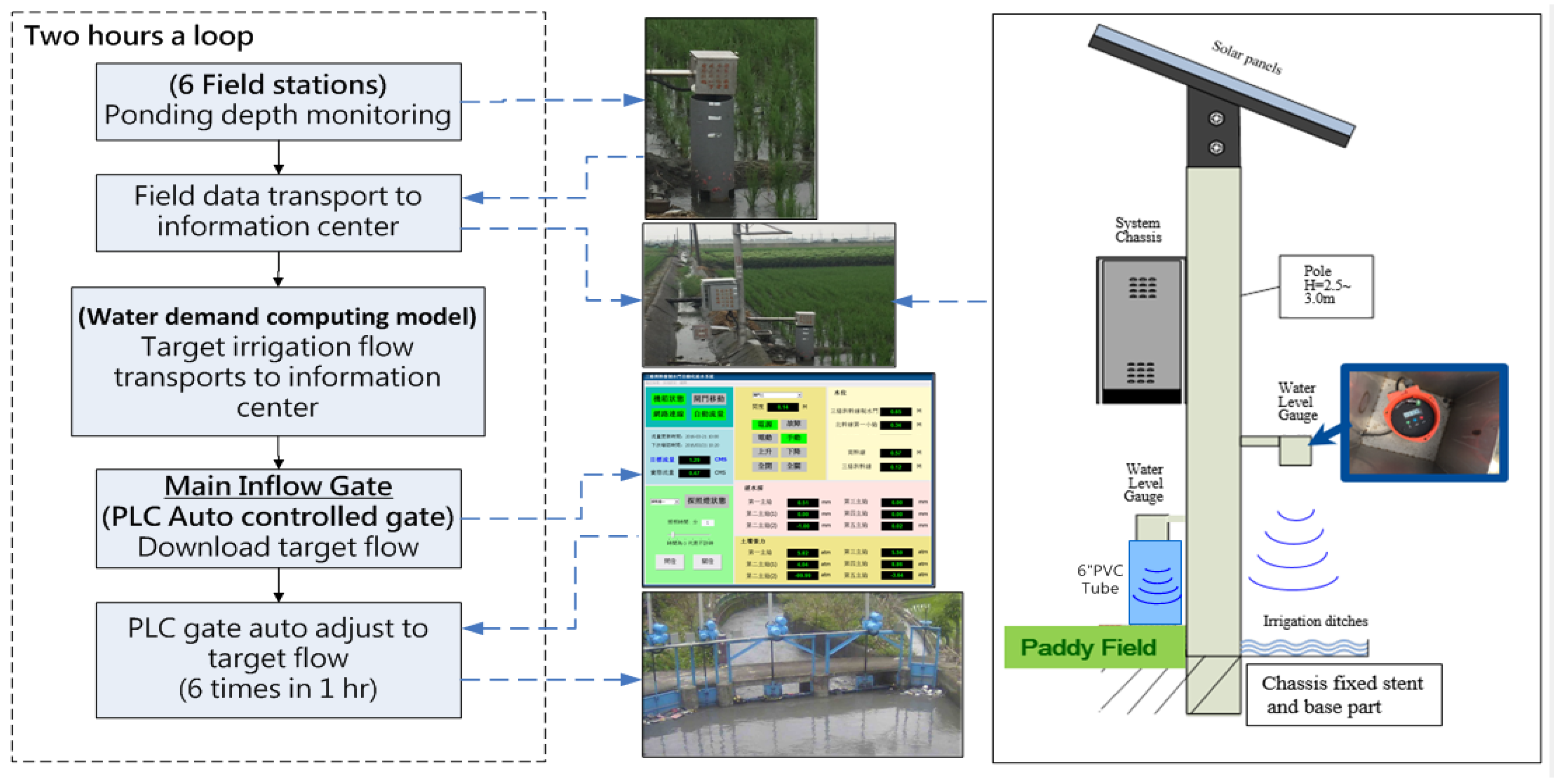Modeling Irrigation Water Requirement of Mixed Crop with Coupled Smart Irrigation System and System Dynamic Model †
Abstract
1. Introduction
2. Study Area Description
3. Material and Methods
4. Results
5. Conclusions
Author Contributions
Funding
Institutional Review Board Statement
Informed Consent Statement
Data Availability Statement
Conflicts of Interest
References
- Wu, R.-S.; Liu, J.-S.; Chang, S.-Y.; Hussain, F. Modeling of Mixed Crop Field Water Demand and a Smart Irrigation System. Water 2017, 9, 885. [Google Scholar] [CrossRef]
- Lin, O.; Syngle, E. Taiwan Drought Results in Rice Area Reduction and Crop Loss; TW2021-0037; Voluntary—Public Distribution; USDA-Foreign Agricultural Service: Taipei, Taiwan, 2021.
- Commonwealth Magazine. Available online: https://web.cw.com.tw/drought-2021-en/index.html (accessed on 27 September 2022).
- Aljazeera. Available online: https://www.aljazeera.com/news/2021/8/20/taiwan-water-woes (accessed on 27 September 2022).
- Ventana Systems, Inc. Vensim User’s Guide Version 5 [EB/OL]. USA. Available online: http://vensim.com/ (accessed on 27 September 2022).





Publisher’s Note: MDPI stays neutral with regard to jurisdictional claims in published maps and institutional affiliations. |
© 2022 by the authors. Licensee MDPI, Basel, Switzerland. This article is an open access article distributed under the terms and conditions of the Creative Commons Attribution (CC BY) license (https://creativecommons.org/licenses/by/4.0/).
Share and Cite
Hussain, F.; Wu, R.-S. Modeling Irrigation Water Requirement of Mixed Crop with Coupled Smart Irrigation System and System Dynamic Model. Environ. Sci. Proc. 2022, 23, 8. https://doi.org/10.3390/environsciproc2022023008
Hussain F, Wu R-S. Modeling Irrigation Water Requirement of Mixed Crop with Coupled Smart Irrigation System and System Dynamic Model. Environmental Sciences Proceedings. 2022; 23(1):8. https://doi.org/10.3390/environsciproc2022023008
Chicago/Turabian StyleHussain, Fiaz, and Ray-Shyan Wu. 2022. "Modeling Irrigation Water Requirement of Mixed Crop with Coupled Smart Irrigation System and System Dynamic Model" Environmental Sciences Proceedings 23, no. 1: 8. https://doi.org/10.3390/environsciproc2022023008
APA StyleHussain, F., & Wu, R.-S. (2022). Modeling Irrigation Water Requirement of Mixed Crop with Coupled Smart Irrigation System and System Dynamic Model. Environmental Sciences Proceedings, 23(1), 8. https://doi.org/10.3390/environsciproc2022023008






